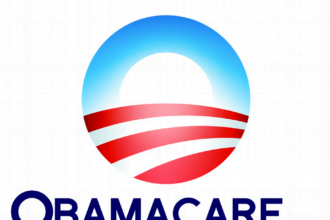I hate saying I told you so. But to quote myself: “Patient engagement is a physician-patient communications challenge and not an HIT challenge.”
Just take a look at the Mayo Clinic’s patient portal experience, which was discussed at HIMMS 2013 and reported on in HIT industry press. The headline:
Mayo Clinic Struggles To Meet Stage 2 Meaningful Use Thresholds For Engaging Patients
I hate saying I told you so. But to quote myself: “Patient engagement is a physician-patient communications challenge and not an HIT challenge.”
Just take a look at the Mayo Clinic’s patient portal experience, which was discussed at HIMMS 2013 and reported on in HIT industry press. The headline:
Mayo Clinic Struggles To Meet Stage 2 Meaningful Use Thresholds For Engaging Patients
Always innovating, the Mayo Clinic some three years ago introduced a web-based portal to share information with their patients. During that time some 240,000 patients have signed up for online accounts. That’s pretty impressive. But there’s a problem. A BIG PROBLEM.
 According to Eric Manley, product manager of global solutions at the Mayo Clinic, they are having a hard time “getting more than 5% “of all the patients who registered with the patient portal to actually use it.”
According to Eric Manley, product manager of global solutions at the Mayo Clinic, they are having a hard time “getting more than 5% “of all the patients who registered with the patient portal to actually use it.”
You see, in order to meet Stage 2 Meaningful Use requirements, and enjoy the benefits that come with meeting this criteria, people actually have to use the portal to access their own health information. You just can’t build a portal and, in Mayo’s case, have fewer than 12,000 unique patients actually use it.
Actually, you can. Hospitals and physicians do it all the time — they just can’t get incentive payments for their efforts.
So What Went Wrong?
It’s not like the folks at Mayo haven’t tried. Mayo’s patient portal offer all the requisite techie gizmos – giving patients access to their medical record, lab results, appointment schedule, and lots of health information. They also recently introduced their first patient-directed mobile health app call “Patient” which makes it easy for people to access their health information online. Mayo even has a Center for Innovation to figure this kind of stuff out.
Upon reflection Manley admits that “simply making services available doesn’t cut it,” he said. “Unless you are engaging patients, you won’t meet meaningful use requirements. [Messaging and other mechanisms] need to be a part of your practice.”
But Wait – I Thought Patient Portals, EMRS and Health Apps Were Patient Engagement Strategies?
Manley is quoted as saying that “patient engagement has been a part of what Mayo has done for a long time, meaningful use, especially Stage 2, is a catalyst to kick it up a notch.”
Let’s face it. Meaningful Use maybe a good way to get providers to adopt badly needed HIT improvements – but it sucks as a way to force patients to “engage” with you. It sucks on several levels.
1) Forcing patients to do anything is wrong and antithetical to the whole idea of patient-centeredness, even if you think it is in the patient’s best interest. Meeting Meaningful Use seems to take precedence over what the patient wants. Manley is quoted as saying “just having it [information and portals] out there isn’t enough”…”It’s making the patient use them.”
2) Patients want to engage with other people regarding their health, particularly their providers. Health, after all, is both an intensely personal and social affair. Mobile health apps and email just can’t give patients want they want – to be listened to and understood. Plus 85% of people want face-to-face access to their physician when they want it. Patients know that HIT threatens to get in between them and their doctors.
3) The content on most patient portals is not particularly relevant or engaging after the first 10 seconds….at least from the patient’s perspective. After all, cognitive involvement is a prerequisite of meaningful engagement and it tough to be interested and spend time thinking about information that is not in context (of a medical encounter), you don’t understand, find boring, completely inaccurate or irrelevant.
So What Is The Solution?
There’s no question that if done right patient portals can and do work. One need look no further than Kaiser Permanente, Group Health and the VA for great examples. The key to their success — and hopefully every provider’s success — is integration.
Health care for us patients occurs within the context of social relations with our physicians. To be engaging, the information you want to share with us needs to be relevant to us from our perspective, come from our physician and be integrated into our overall care plan. Only then will we have the trust and confidence that the information is ours, and is something we need to pay attention to. We focus on our health while we are in the doctor’s office; if you really want to engage us, do it there.
That’s my opinion…what’s yours?








